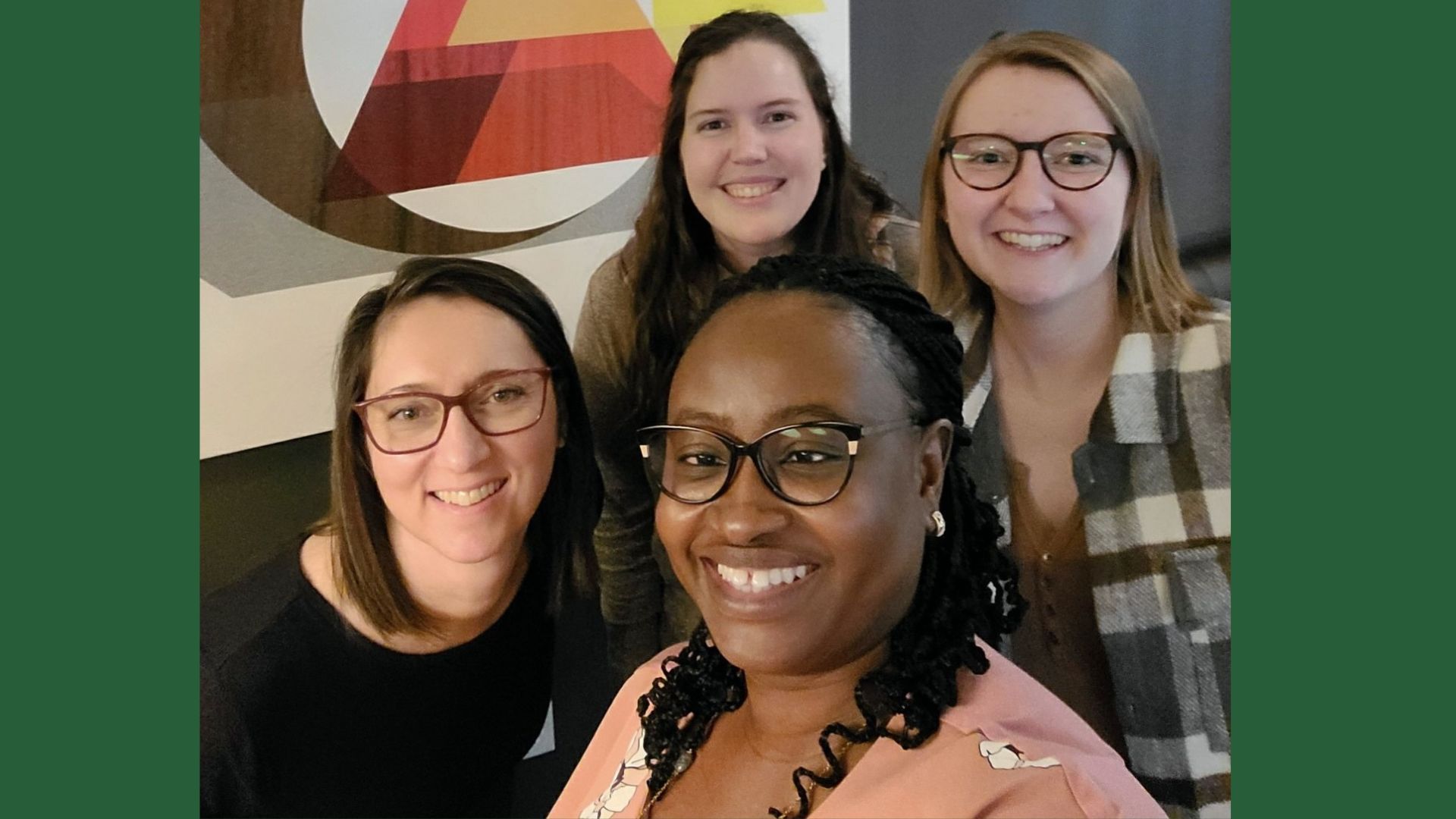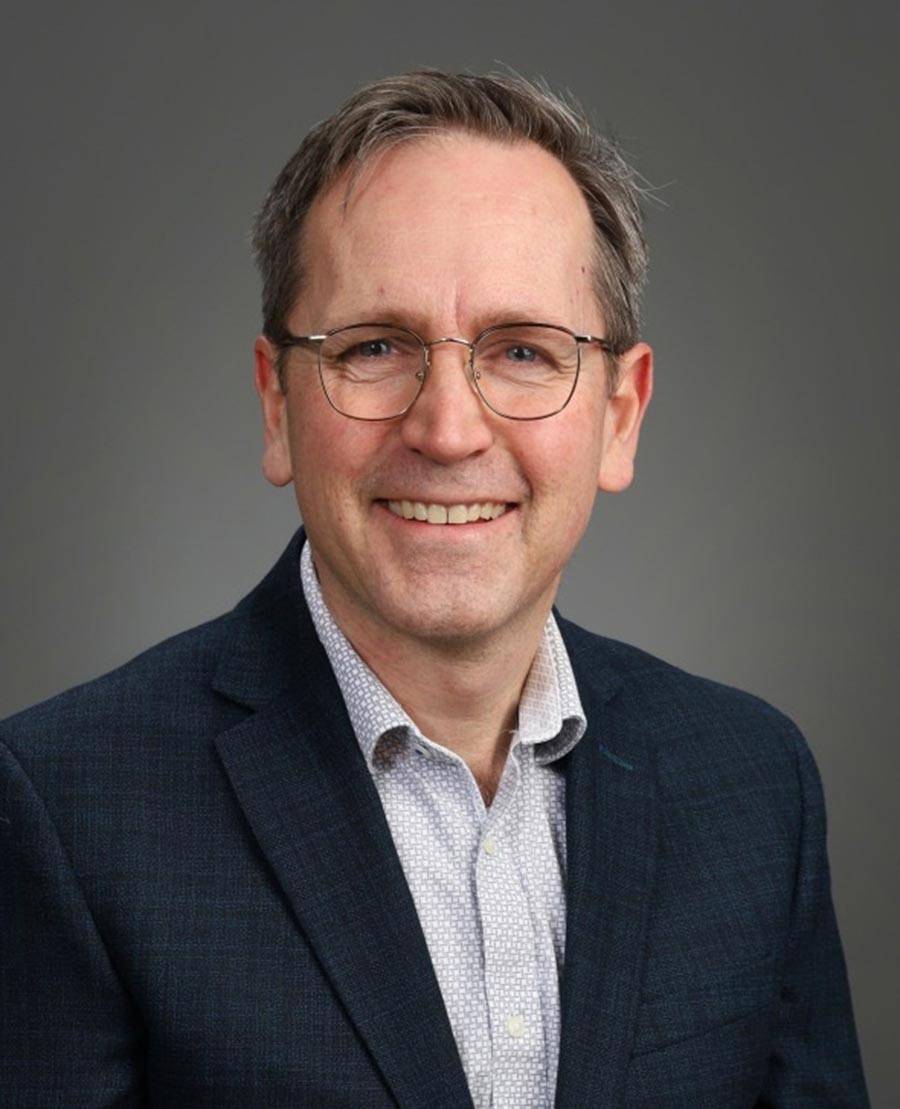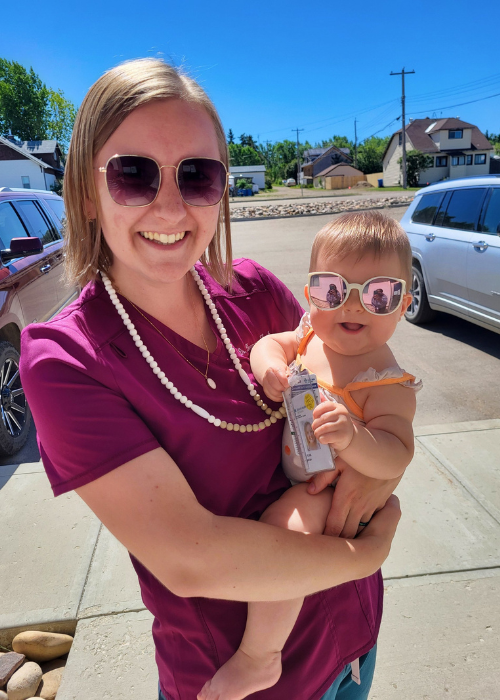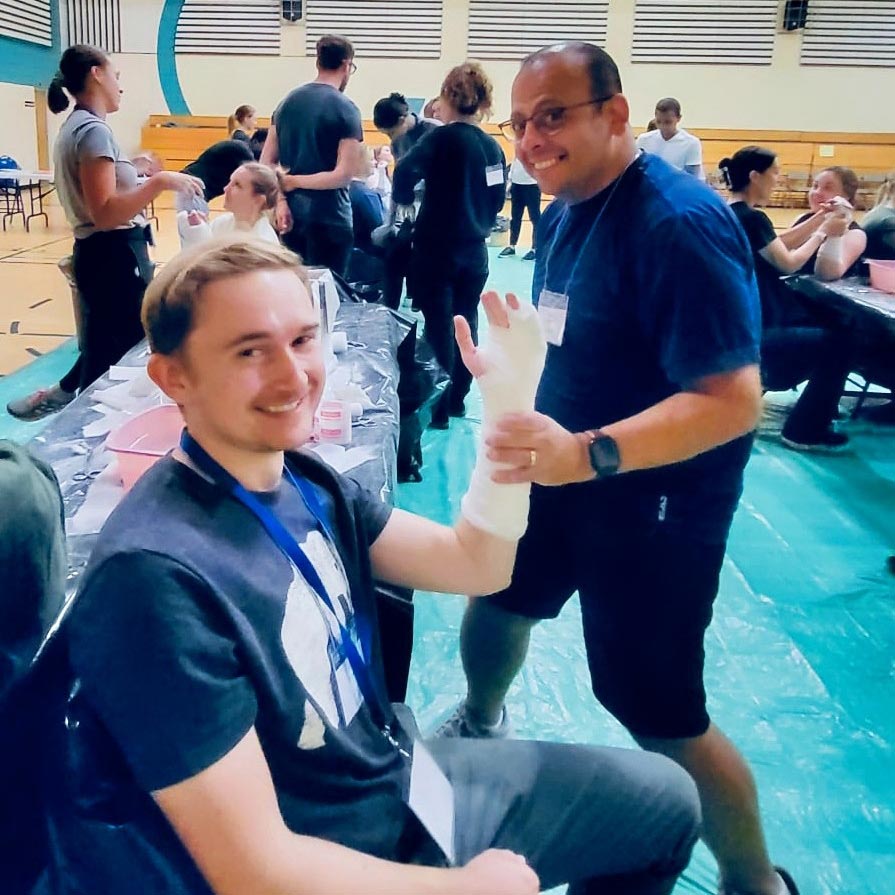Calling all future doctors in northern Alberta
Gillian Rutherford - 6 September 2024

Family physician Deanna Funk (right) with her colleagues at their clinic in Spirit River, Alta.: Eva Kitagawa (left), Danae Wolfaardt (back) and Folake Olaniyan (front). (Photo: Supplied)
Deanna Funk already knew she wanted to be a doctor as a high school student in Beaverlodge, Alta., but she had no idea how to get there. Even the school counsellor wan’t familiar with the process.
“I come from a family of farmers, bus drivers and teachers. No one else had done a medical degree before,” she recalls.
She figured taking biology would be a good place to start, so she enrolled in the University of Alberta’s Augustana Campus. While there, she realized that kinesiology would get her to her goal too, so she switched majors, then went on to take medicine at the University of Calgary, opting for small-town and rural placements whenever she could.
Now a family physician in a thriving four-woman medical practice in Spirit River, Funk hopes the path will be much easier for current rural high schoolers with the same dream.
The U of A’s new Northern Alberta Medical Program (NAMP) is now accepting applicants for the fall 2025 term, offering students the opportunity to take all of their medical training in Grande Prairie and other northern Alberta communities.
“If you are interested in health care and you want a really rewarding and stable career, explore it,” Funk says. “And now it’s on your doorstep!”
Recruit local, train local, retain local

“Northern Alberta communities need people who have that northern perspective, who feel like their heart is there and they want to stay there,” says Darryl Rolfson, associate dean of undergraduate medical education for the Faculty of Medicine & Dentistry and an internal and geriatric medicine specialist who practises in Athabasca, Westlock and Edmonton.
“The long-term goal is to have a sustainable cohort of doctors who are locally trained and want to stay in and be part of the north.”
The new program’s motto is, “Recruit local, train local, retain local.” U of A med school enrolment will bump up by 30 learners to 192 per year, thanks to new funding from the Alberta government and a partnership between the U of A and Northwestern Polytechnic.
Applicants from northern Alberta with stronger rural connections will be given preference for program spots in Grande Prairie so long as they meet the basic entry requirements, which Rolfson says are very achievable. The academic requirements are an undergraduate degree with competitive marks and a threshold score on the Medical College Admission Test.
Students in the program will train for generalist careers, which includes family medicine, internal medicine, obstetrics and gynecology, pediatrics, general surgery and psychiatry. The first two years will be taught in person or virtually at Northwestern Polytechnic and the adjoining Grande Prairie Regional Hospital. The next two years will be mainly hands-on, practical experience under the supervision of teaching doctors known as preceptors at hospitals and clinics across northern Alberta.
Rolfson is targeting junior high and high school students to consider setting their sights on the program in the future. But he also encourages local people already trained or in other health-care fields to apply now, knowing they won’t have to move to Edmonton to complete their degree.

Funk says anyone considering the program should reach out to a rural family doctor and ask lots of questions, maybe even shadow them for a day, to learn just how exciting the job can be.
“When I trained in the city, I got bored filling out forms for drivers’ medical exams, treating runny noses and urinary tract infections,” she says. “In rural medicine, I can deal with knee swelling, put in stitches, place a cast, and diagnose the cause of sudden-onset abdominal pain, all in one day. That breadth — from mental health to a stroke — keeps me on my toes.”
Funk says she develops a unique and intimate relationship with each patient, often treating three generations from one family.
“I love the continuity. We’re with patients when a new baby arrives and when they’re losing a loved one. It truly is cradle-to-grave medicine. It’s an honour.”
No “fear of missing out”
Funk notes that being a rural doc is emotionally and physically taxing, as is going to med school, so she would have appreciated being able to tap into her family support system if she had lived closer to home while studying. Now that she’s practising medicine, that support comes from her husband, new baby, other family members and three clinic colleagues.
Kirill Lissovskiy, who is doing his second year as a family practice resident in Grande Prairie after completing his MD at the U of A, moved to Drayton Valley from Kazakhstan via Montreal at the age of 14. The culture shock was difficult, but he soon realized how much he valued being a part of a rural community. He chose rural practical placements throughout his studies and now plans to practise in rural Alberta. He says he would have benefited from the program had it been offered while he was training.

“Family support is one of the most important things that will help you get through your education, so if you are from northern Alberta, it would certainly be a fantastic opportunity for you to stay here in Grande Prairie and learn,” Lissovskiy says.
He cautions potential applicants against the “fear of missing out” — worrying that the northern program might not be as good as the one in Edmonton. Having trained as a medical student and resident in Grande Prairie himself, he’s confident the new program will offer the same breadth and quality of teaching as the one in Edmonton, with small classes and high-quality mentorship.
“The Grande Prairie medical community is probably the best aspect for me. The physician facilitators and preceptors here are dedicated to teaching.”
Lissovskiy’s also keen on the lifestyle in Grande Prairie. “It’s a very young community and it is a good choice for young families,” he says, pointing to amenities such as the local walking trails, the Olympic-size swimming pool at Eastlink Centre and the Grande Prairie Live Theatre for entertainment.
Strengthening the whole community
Rolfson is busy recruiting facilitators and preceptors from every northern community that has a hospital, including places like High Level, Manning, La Crete, Fort Vermilion, Spirit River, Fairview, Grimshaw, Glendon, Athabasca, Barrhead, Swan Hills, Wabasca, Slave Lake, Boyle, Whitecourt, Mayerthorpe, Fox Creek and the Cold Lake area. He says NAMP is set to become the farthest-reaching and northernmost multi-site medical education program in the country, if not the world.
“We’re reaching out to communities that have not had this opportunity in the past,” Rolfson says. “My goal is to visit every place in northern Alberta that has a hospital where students could get practical experience from qualified teaching doctors, and to personally invite each one of them to be a part of it.”
The program mirrors a new partnership between the universities of Calgary and Lethbridge to offer similar training to southern Alberta students. Rolfson credits the U of A’s Office of Rural and Regional Health for working for decades to build out existing support for rural health education in communities such as Camrose, Edson, Bonnyville, Peace River and Hinton. He notes that Richard Martin, a family doctor from Grande Prairie, has just been named head of NAMP.
Rolfson is confident the program will transform rural health care in Alberta.
“When you bring in a sustainable physician care delivery model, it attracts other health-care professionals and it starts to build up the capacity of the system as a whole,” he says. “Once you have that excitement and capacity for health care, it actually strengthens the whole community.”